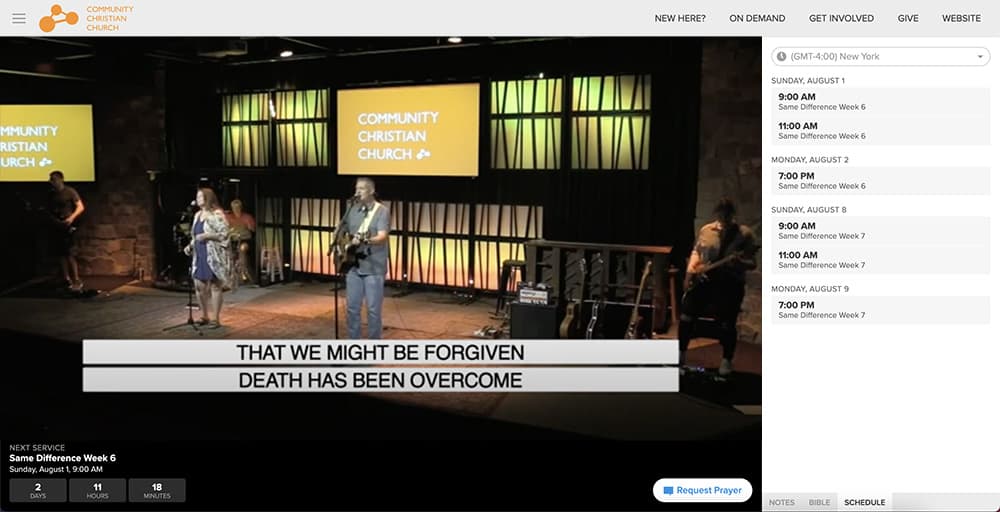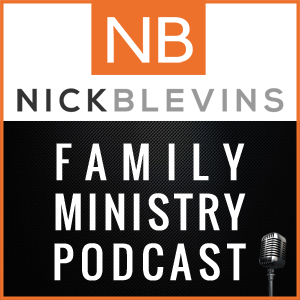Due to COVID-19, churches dipped significantly in in-person attendance, despite people needing refuge and support then as much as ever. Moving forward with modern solutions, many churches have adopted approaches like live streaming to help conduct their services and reach those who need them.
If livestreaming is something new for your church, this is a helpful list of some of the most important things you need to know in order to offer the best experience possible.
Decide Your Method of Filming
The first thing you need to do is decide how you’re going to broadcast your services from a tech perspective. The main ways of doing this are either from a smartphone, tablet, or using a professional camera fixed to a tripod.
There’s no doubt that the smartphone approach is one of the most popular ways to Livestream just about anything; church services included. The setup for these kinds of broadcasts is simple, usually with a basic app download, and since you probably already own a smartphone, the costs are basic. You just need a stable Wi-Fi connection since data plans are typically far too restrictive.
However, you need to be aware of the one downside here is which is the basic video and sound quality. You are going to be limited by your device’s hardware, but if this is a problem, you may want to upgrade your device or invest in an accessory, such as a dedicated external microphone.
On the other hand, you could opt for a professional camera setup.
Although you might be thinking that this is an extra expense which is unnecessary, this can really up the quality of your livestream, which can make it more attractive and therefore more people will want to view what you’ve got to offer.
Although a camera with a microphone and a tripod is a bit expensive, it will stabilize the camera and ensure video quality is a bit higher. If you already own a camera, or someone in the community can lend you theirs, then this won’t be an issue and is certainly the approach you should take.
Regardless of what setup you choose, you’re probably going to want a laptop, personal computer, or desktop so you can monitor your broadcast while you’re broadcast to ensure everything is running smoothly at all times.
Choosing What Platform to Use
Once you’ve defined your setup, you need to think about which streaming platform you’re going to broadcast on. If you’re technically minded, you can broadcast to multiple platforms at the same time, but we recommend going for one, the main one your viewers will be able to access easily. Here are some platforms to think about;
Facebook is a free platform, which is one of the most popular platforms for up-and-coming churches to use.
A Facebook livestream is relatively easy to set up, and people do not even technically need a Facebook account to watch one of your livestreams. All people need is a link! This is a great option for modern churches, especially those with a congregation who are fluent in social media.
YouTube
As Fernando Harris, a journalist at Write My X and 1Day2Write, noted, “YouTube is another great tool for the novice church new to livestreaming. It has similar perks to Facebook in that watchers do not necessarily need a YouTube account to watch, as you are allowed to watch anonymously just like Facebook.”
YouTube is more popular than Facebook as a website, and slightly less baffling for some of the older members of your congregation! It is the second most commonly visited website in the world, surpassed only by Google. YouTube is one of the most common platforms for church livestreaming in this day and age.
Zoom
Zoom has shot to popularity and global fame in the Covid-19 pandemic and has become a widely recognized platform renowned for its ability to connect people through screens.
The big difference between Zoom and the other previously mentioned options for livestreaming is that Zoom is primarily an interactive platform built for more personal meetings such as Bible study groups, conference meetings, and other circumstances where people need the ability to contribute.
Emma Louise, a business writer at Dissertation Help and Britstudent, commented that “Most people do not think of using Zoom as a livestreaming service because it is not its primary function, but it actually works really well.” The only downside is that you have to pay for the ability to livestream on Zoom.
Extra Things to Think About
It might seem beside the point to worry about these things, but the specifics of church livestreaming are more important than we realize, so here are some other quality-related aspects you’re going to want to think about.
Lighting
The best idea when setting up lighting for your livestream is to ensure lights and lamps are positioned to face the focus or subject of the video feed. This will highlight the focus for the livestream and reduce extra shadowing that might distract from the focus of your video.
Sound
To reduce distractions and background noise in your livestream, ensure the video is being filmed in an area where there is little other noise. If your church has access to a phone-enabled microphone, try it out! Otherwise, try to film in a smaller area to reduce echo and force higher quality of sound.
Background
Try to film where there is a simple and non-distracting background. There is no need to overdress it, as long as the focus is where it should be. Also, make sure that the background is not the same color as the clothes on the people speaking or performing!
Thinking About Your Experience
With tech and functionality points aside, it’s important to think about one key thing; why you’re broadcasting in the first place. If you can bear this in mind, then you’ll understand what kind of broadcasts you’re trying to achieve and what decisions you should make.
For example, are you broadcasting because you want people to tune in and listen, or do you want the service to be more personal and interactive? If you wanted the latter, then it would be worth thinking about sitting down with your viewers and answering questions they post in chat. You can get creative with your approach and see what works for you. Don’t be afraid to experiment.
About the Author
George J. Newton is an online business and learning development manager at Coursework Writing Services and Thesis Writing Service. In his spare time, he enjoys reading and traveling. He also writes for Custom Coursework.






